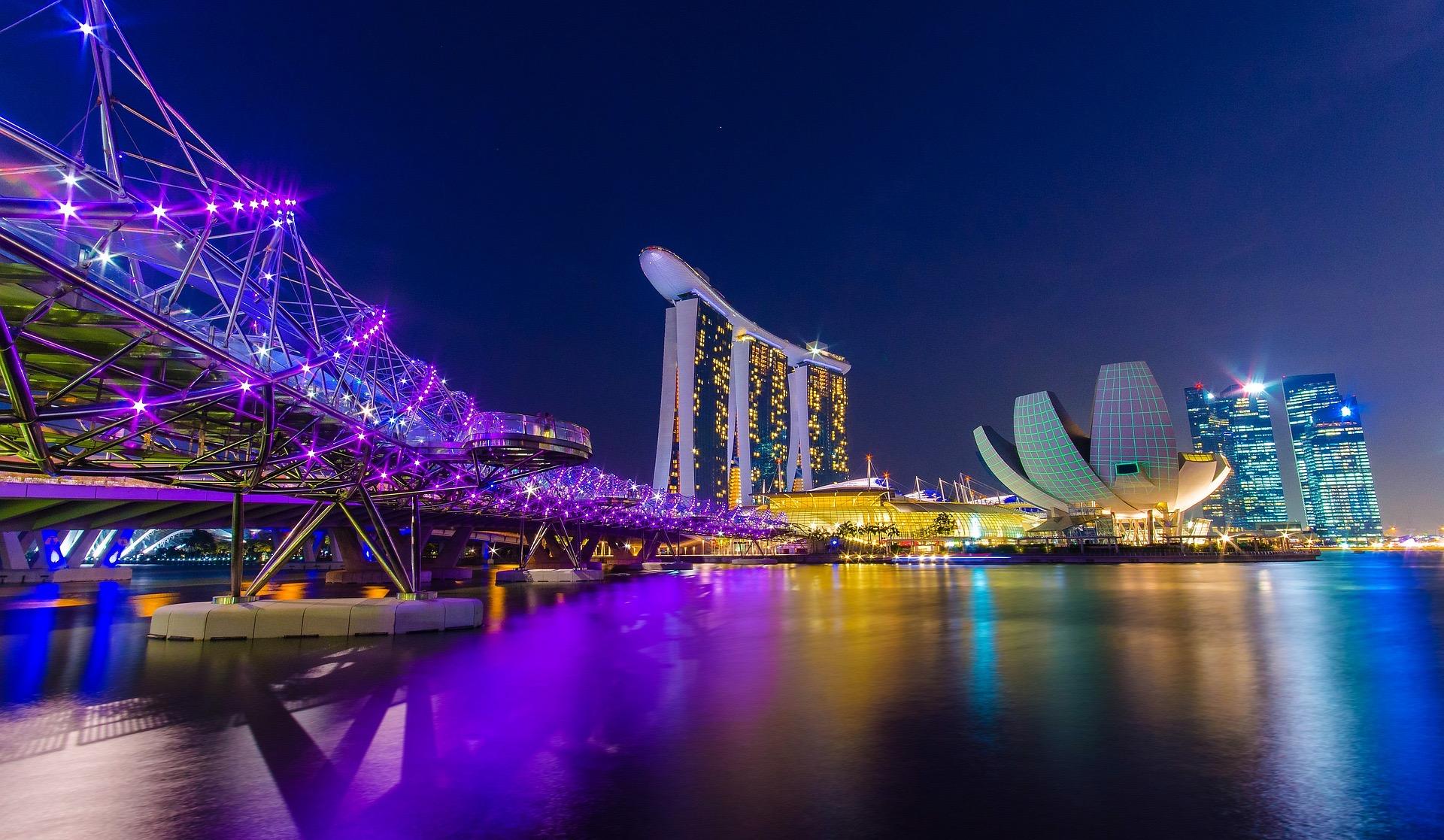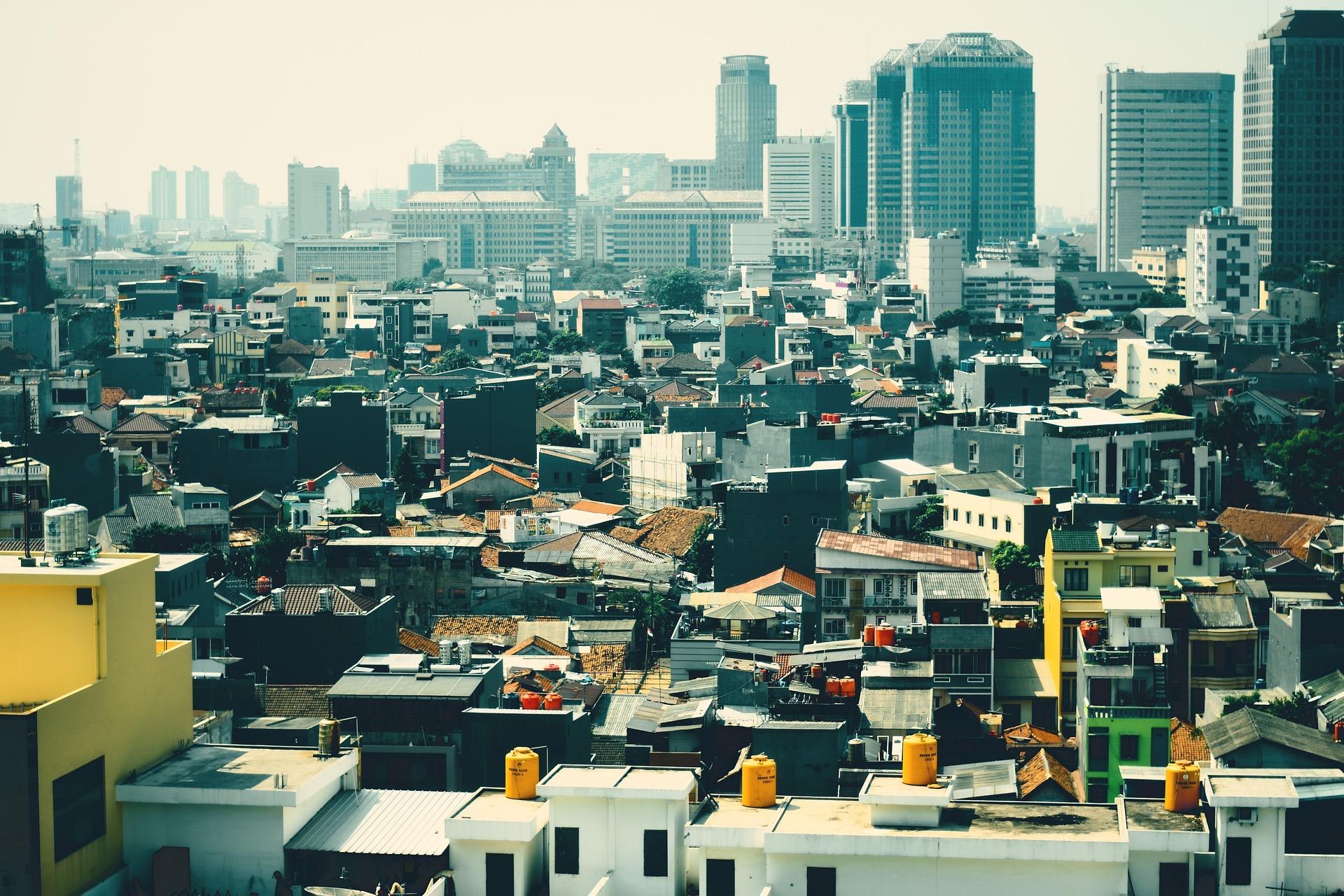

Integrating Water Security into Smart City Planning: Smart Technologies and Policy Frameworks for Water-Secure Urban Development






Water security is a pressing challenge for urban development in the 21st century, driven by rapid urbanization, climate change, and population growth As cities continue to expand, the demand for water increases, putting immense pressure on water resources and infrastructure This white paper explores the critical intersection of smart city planning and water security, providing practical strategies and policy frameworks to ensure sustainable urban water management.
1. Importance of Water Security: Water security is essential for urban populations' health, well-being, and productivity. It encompasses the availability, accessibility, quality, efficiency, and resilience of water resources and services
2. Smart Technologies: Information and communication technologies (ICT)-based tools and systems can significantly enhance water security in urban areas. Smart meters, sensors, and data analytics can improve water use efficiency, quality monitoring, and disaster management
3. Case Studies: Successful implementations in Singapore, Jakarta, and through Clean Water AI demonstrate the tangible benefits of smart water technologies, including improved operational efficiency, real-time monitoring, and proactive water management.
4. Strategies for Integration: Effective integration of water security into smart city initiatives requires collaborative frameworks, supportive policies and regulations, and robust public-private partnerships. These strategies help align the goals of different stakeholders and leverage their resources and expertise.
5. Governance and Stakeholder Engagement: Strong governance and active engagement of citizens and stakeholders are crucial for the success of smart water initiatives. These elements ensure that water management solutions are inclusive, transparent, and responsive to the needs of all urban residents.
6. Building Resilience and Sustainability: Policies and innovations that promote resilience and sustainability are necessary to address the long-term challenges of water security These approaches ensure that smart water solutions are adaptable and effective in changing environmental and social conditions.
Recommendations:

1. Raise Awareness: Increase understanding of the value and impact of smart water solutions among stakeholders.
2. Enhance Data and Information: Utilize smart technologies to improve waterrelated data collection, processing, and dissemination.
3. Foster Collaboration: Develop collaborative frameworks facilitating coordination and cooperation among water stakeholders.
4. Supportive Policies: Implement policy and regulatory frameworks that provide guidance and incentives for smart water solutions
5. Leverage Partnerships: Utilize public-private partnerships to mobilize resources and capacities for water security initiatives.
6. Ensure Security and Resilience: Implement technologies and practices that protect water systems from threats and enhance their ability to recover from disruptions.
This white paper provides a comprehensive guide for urban planners, policymakers, practitioners, and researchers. By integrating water security into smart city planning, cities can achieve sustainable and resilient urban development and ensure a secure water future for generations to come.


Water security is a critical challenge for urban development in the 21st century According to the United Nations, more than half of the world's population lives in urban areas, and this proportion is expected to increase to 68% by 2050 Urbanization puts immense pressure on water resources, as cities consume more than they produce and face multiple risks of water scarcity, pollution, and flooding. Moreover, climate change and population growth exacerbate these challenges, increasing water availability, demand variability, and uncertainty.
Smart cities are urban areas that leverage ICT to enhance the quality and performance of urban services, such as energy, transportation, and governance. They aim to improve urban environments' efficiency, sustainability, and livability by using data and analytics to optimize resource allocation, service delivery, and citizen participation. However, smart cities cannot achieve their full potential without addressing the water security issues threatening their viability and resilience.


This white paper examines how smart technology can enhance water management in urban areas, offering practical strategies and policy frameworks for integrating water security into smart city planning The paper is structured as follows:
• Section 1: Defines water security in smart cities and its growing importance in urban planning.
• Section 2: Reviews smart technologies that improve water use efficiency, monitoring, and quality control
• Section 3: Presents case studies on the impact and scalability of smart technologies in water security
• Section 4: Discusses strategies for integrating water security in smart city initiatives, including collaborative frameworks, policy considerations, and public-private partnerships
• Section 5: Examines policy frameworks and stakeholder engagement to support smart water security, emphasizing governance, citizen involvement, and innovation for resilience and sustainability.
• Section 6: Concludes with key findings, practical recommendations, and future research directions
The paper aims to provide a comprehensive and evidence-based guide for urban planners, policymakers, practitioners, and researchers interested in advancing water security in smart city development.



The United Nations defines water security as "the capacity of a population to safeguard sustainable access to adequate quantities of acceptable quality water for sustaining livelihoods, human well-being, and socio-economic development, for ensuring protection against water-borne pollution and water-related disasters, and for preserving ecosystems in a climate of peace and political stability." Water security is a multidimensional concept encompassing physical, social, economic, and environmental aspects of water resources and services
Water security is essential for smart cities, as water is a key input and output of urban systems and affects the health, well-being, productivity, and resilience of urban populations. Water security in smart cities can be measured by the following indicators:
• Water availability: the amount and reliability of water sources and supplies to meet urban users' and ecosystems' current and projected water demand
• Water accessibility: the physical and economic access to safe and sufficient water services and infrastructure for all urban users, especially the poor and marginalised groups.
• Water quality: the degree of contamination and pollution of water sources and supplies, and the compliance with water quality standards and guidelines for human
• Water efficiency: the ratio of water uses to water output in urban systems and the minimization of water losses, leaks, and wastage in water distribution and consumption
• Water resilience: the capacity of urban systems to cope with and recover from water-related shocks and stresses, such as droughts, floods, storms, and cyberattacks.
Water security in smart cities is influenced by various drivers and pressures, such as urbanization, climate change, population growth, economic development, land use change, and social inequality These factors affect water demand and supply, water infrastructure and governance, and urban areas' water risks and vulnerabilities. Therefore, water security in smart cities requires a holistic and adaptive approach that considers the interdependencies and trade-offs among different water users, sectors, and scales.

Smart technologies are ICT-based tools and systems that can collect, process, and communicate data and information to enhance the performance and efficiency of urban services and systems. Smart technologies can be applied to various aspects of water management, such as water supply, distribution, consumption, treatment, and reuse Smart technologies can offer the following benefits for water security in smart cities:
• Improve water use efficiency and conservation, by enabling real-time monitoring and control of water flows and pressures, detecting, and reducing water losses and leaks, and providing feedback and incentives to water users to adopt water-saving behaviors and practices.
• Enhance water quality and safety by deploying sensors and devices to measure and report water quality parameters, such as pH, turbidity, temperature, and contaminants, and by implementing automated and remote-control systems to adjust water treatment processes and prevent water pollution incidents.
• Support water resilience and disaster management by integrating data and models from various sources, such as satellites, weather stations, hydrological stations, and social media, to forecast and warn of waterrelated hazards, such as droughts, floods, and storms, and by coordinating and optimizing the response and recovery actions of water operators and emergency services
• Facilitate water governance and participation by providing transparent and accessible information and platforms to water stakeholders, such as water authorities, utilities, regulators, consumers, and civil society, to enable informed decisionmaking, accountability, and collaboration on water issues and solutions
Some examples of smart technologies that can be applied to water security in smart cities are:
• Smart meters and smart irrigation systems can measure and regulate water consumption and irrigation and provide feedback and incentives to water users to reduce water demand and waste.
• Smart water networks and leak detection systems can monitor and control water flows and pressures, identify and locate water losses and leaks, and enable prompt, targeted repairs and maintenance.


• Smart sensors and smart water quality systems can measure and report water quality parameters, alert water operators and users of water quality issues and incidents and enable automated and remote control of water treatment processes.
• Smart water management and decision support systems can integrate and analyze data and models from various sources and provide water operators and managers with optimal and adaptive solutions for water allocation, distribution, and operation
• Smart flood warning and management systems can forecast and warn of flood risks and impacts and coordinate and optimize the response and recovery actions of water operators and emergency services.
• Smart water platforms and portals can provide transparent and accessible information and communication to water stakeholders, enabling informed decision-making, accountability, and collaboration on water issues and solutions.


In a significant advancement towards sustainable water management, Singapore's National Water Agency Public Utilities Board (PUB) initiated the first phase of the Smart Water Meter Programme. This move, part of the Smart PUB Roadmap, entails the installation of 300,000 smart water meters across select locations in Singapore. The implementation, spearheaded by SP Services Limited, a subsidiary of SP Group, began in early 2022 and marks a pivotal step in transforming PUB into a smart utility.
The project commenced following a comprehensive open tender process, attracting numerous local and international participants. The selection criteria focused on the bidders' technical expertise, experience, and proven capability in similar projects. With its robust background and partnership with an experienced network solutions provider, SP Services was selected for this project. The contract encompasses the supply, installation, wireless network provision, IT systems development, and maintenance services for 15 years

The initial phase targets seven locations based on criteria including property diversity, deployment efficiency, and the need for meter upgrades. The areas include established and new housing estates, ensuring comprehensive coverage and integration into PUB's ongoing meter replacement program. The installation process is designed to be seamless and cost-free for the residents
Smart water meters represent a technological leap from traditional manual reading systems These meters automatically transmit consumption data to PUB, facilitating daily consumer monitoring through a dedicated portal. This feature empowers residents to actively manage their water usage, identify leaks early, and save on water and utility expenses The initiative is not just about modernizing infrastructure but also about fostering a culture of proactive water conservation among citizens
For PUB, the shift to smart metering is a strategic move towards enhancing operational efficiency Real-time data collection allows for better demand management, network optimization, and quicker leak detection. This efficiency is crucial for a resource-limited country like Singapore, where optimal water management is essential for sustainability and security.
This first phase is foundational to PUB's long-term vision of digitizing the nation's water infrastructure. The program is expected to extend beyond the initial phase, with subsequent expansions incorporating this pilot's learnings and technological advancements. Ultimately, the Smart Water Meter Programme is a cornerstone in Singapore's journey towards a smarter, more sustainable future in water management, aligning with the broader goals of environmental sustainability and resource conservation. .



Clean Water AI is an innovative solution that leverages the power of Artificial Intelligence (AI) and the Internet of Things (IoT) to monitor water quality in real-time. It uses a deep-learning neural network to detect dangerous bacteria and harmful particles in water. This allows users to view their drinking water at a microscopic level, like footage from a security camera
The primary goal of Clean Water AI is to ensure water safety, which can be challenging to maintain across the vast distribution of a municipal water system. Contamination by bacteria or dangerous particles is often difficult to detect before health issues occur To address this, Clean Water AI uses trained models to recognize harmful particles and bacteria.
The solution involves training and deploying a neural network model to edge devices that classify and detect harmful bacteria and particles Cities can install these IoT devices across various water sources to monitor water quality in real-time. This real-time monitoring system can run continuously, providing constant updates on water quality

The technical details of Clean Water AI include using Caffe, a deep learning framework that allows a higher frame rate when running with Intel Movidius Neural Computing Stick. This enables the IoT device to classify and detect dangerous bacteria and harmful particles
Clean Water AI has been built as a proof of concept using a microscope and Up2 board The entire prototype costs less than $500, and plans are to scale up production to help reduce unit costs.
In summary, Clean Water AI is a promising technology that could revolutionize how we monitor and ensure water safety. By harnessing the power of AI and IoT, it provides a cost-effective, efficient, and reliable solution for real-time water quality monitoring.


Jakarta, a city frequently facing flood challenges, has recently developed an innovative Flood Control System, earning acclaim at the ITU WSIS Prizes 2022 and the IDC Smart City Asia Pacific Awards 2022. At the forefront of technological advancement, this system integrates IoT and AI, marking a significant upgrade from traditional, manual flood management methods
This project is a collaborative effort between Jakarta Smart City and the Jakarta Water Resources Service (DSDA). Its primary objective is to improve flood risk management across Jakarta. The system employs a variety of sensors installed across 178 pump houses and sluice gates, gathering essential data to monitor and predict flood situations.


The sensor network includes:
• Vibration and Temperature Sensors to monitor pump engine functionality and temperature.
• Water Level Sensors using infrared technology to measure water levels, particularly during heavy rains or water inflows.
• Water Flow Sensors placed in rivers to determine the velocity of water currents
• Rainfall Sensors measuring the intensity of precipitation.
• CCTVs with AI to analyze water levels using a scale on the reservoir walls.
• Box Panels that process and transmit sensor data, converting analog information into digital formats for system analysis.
These sensors enable real-time monitoring of key flood indicators such as water levels, rainfall, and flow rates. This instant data availability significantly enhances the speed and efficiency of flood response and management. Furthermore, the system accumulates historical flood data, providing a valuable resource for policymakers in formulating targeted and efficient flood mitigation strategies.




This section discusses strategies for integrating water security in smart city initiatives and highlights collaborative frameworks, policy and regulatory considerations, and public-private partnerships that can facilitate smart water solutions It also identifies the challenges and barriers that hinder the integration of water security in smart city initiatives and provides some recommendations to overcome them.

Collaborative frameworks are institutional and organizational arrangements that enable the coordination and cooperation of multiple stakeholders, such as water authorities, utilities, regulators, consumers, and civil society, to plan, implement, and evaluate smart water solutions. Collaborative frameworks are essential for integrating water security in smart city initiatives, as they can help to align the goals and interests of different water users, sectors, and scales and to leverage the resources and capacities of different water actors and partners. Collaborative frameworks can also help to foster innovation and learning by creating a conducive environment for knowledge sharing, experimentation, and feedback.
Some examples of collaborative frameworks that can support the integration of water security in smart city initiatives are:
• Water governance networks are formal or informal networks of water stakeholders who share information, knowledge, and resources and coordinate and collaborate on water issues and solutions
• Water management platforms are online or offline platforms that provide water stakeholders with access to data, information, and communication and enable participation, consultation, and feedback on water issues and solutions.
• Water innovation hubs are physical or virtual spaces that facilitate the generation, testing, and diffusion of innovative ideas and solutions for water security and involve the collaboration of water stakeholders, such as researchers, entrepreneurs, and policymakers.
Policy and regulatory considerations are the legal and institutional frameworks and instruments that guide and govern smart water solutions' planning, implementation, and evaluation. Policy and regulatory considerations are important for integrating water security in smart city initiatives, as they can help to create a supportive and enabling environment for smart water solutions and to ensure the quality, safety, and sustainability of water services and systems. Policy and regulatory considerations can also help address the challenges and risks of smart water solutions, such as data privacy, security, and ownership, and protect the rights and interests of water users and stakeholders.

Some examples of policy and regulatory considerations that can support the integration of water security in smart city initiatives are:
• Water policy frameworks are the overarching and comprehensive policies and strategies that define the vision, goals, and principles of water security and provide direction and guidance for water planning and management.
• Water regulatory frameworks are the specific and detailed rules and standards that regulate the quality, safety, and performance of water services and systems and provide the mechanisms and instruments for water monitoring and enforcement.
• Water incentive schemes are the financial and non-financial incentives that encourage and reward the adoption and implementation of smart water solutions and provide the sources and mechanisms for water funding and financing.


Public-private partnerships are the contractual and cooperative arrangements between public and private actors, such as water authorities, utilities, regulators, and technology providers, to deliver and manage water services and systems.
Public-private partnerships are relevant for integrating water security in smart city initiatives, as they can help to mobilize and leverage the resources and capacities of different water actors and partners, as well as improve the efficiency, reliability, and quality of water services and systems.
Public-private partnerships can foster innovation and learning by creating a conducive environment for knowledge sharing, experimentation, and feedback.
Some examples of public-private partnerships that can support the integration of water security in smart city initiatives are:
• Water service contracts are the agreements between water authorities or utilities and technology providers to provide and operate water services and systems, such as smart meters, sensors, and platforms.
• Water performance contracts are the agreements between water authorities or utilities and technology providers to achieve and maintain water performance targets and indicators, such as water efficiency, quality, and resilience.
• Water innovation contracts are agreements between water authorities, utilities, and technology providers to develop and test innovative ideas and solutions for water security, such as smart water networks, systems, and platforms.
Despite the potential and benefits of smart water solutions, various challenges and barriers hinder the integration of water security in smart city initiatives.

Some of the common challenges and barriers are:
• Lack of awareness and understanding of the value and impact of smart water solutions and the reluctance and resistance to adopt and implement them
• Lack of data and information on water resources and services and the difficulties and costs of collecting, processing, and communicating them
• There is a lack of coordination and collaboration among water stakeholders, as well as conflicts and competition among water users, sectors, and scales.
• There is a lack of policy and regulatory support and alignment and gaps and inconsistencies among different water policies, rules, and standards.
• Lack of funding and financing, and the difficulties and risks of mobilizing and allocating resources and capacities for smart water solutions.
• Lack of security and resilience, and the vulnerabilities and threats of smart water solutions, such as cyberattacks, data breaches, and system failures.

To overcome the challenges and barriers and to facilitate the integration of water security in smart city initiatives, some of the practical recommendations are:
• Raise awareness and understanding of the value and impact of smart water solutions and provide feedback and incentives to water users and stakeholders to adopt and implement them.
• Improve data and information on water resources and services, and use smart technologies, such as sensors, devices, and platforms, to collect, process, and communicate them
• Enhance coordination and collaboration among water stakeholders and use collaborative frameworks, such as water governance networks, management platforms, and innovation hubs, to plan, implement, and evaluate smart water solutions.
• Create policy and regulatory support and alignment Use policy and regulatory frameworks and instruments, such as water policy frameworks, regulatory frameworks, and incentive schemes, to guide and govern smart water solutions
• Mobilize and leverage funding and financing, and use public-private partnerships, such as water service contracts, performance contracts, and innovation contracts, to deliver and manage smart water solutions.
• Ensure security and resilience, and use smart technologies, such as sensors, devices, and platforms, to monitor and protect smart water solutions, and to cope with and recover from water-related shocks and stresses. .



This section outlines the essential roles of policy frameworks and active stakeholder engagement in enhancing smart water security in urban environments. It highlights the necessity for governance systems to effectively integrate smart water technologies by tackling the challenges of water management that span various sectors and administrative levels. Moreover, the section examines the challenges of involving citizens and stakeholders in smart water projects, recognizing the need to overcome these obstacles to achieve an inclusive, responsive, and cooperative water management system Additionally, it considers the importance of resilience and sustainability in developing policies and fostering innovation to ensure that smart water solutions harmonize with wider water management goals and are flexible enough to adapt to future changes and challenges.


Governance is the decision-making process and implementation of policies and actions that affect the management and use of water resources and services
Governance involves multiple actors, such as governments, the private sector, civil society, and communities, who have different roles, responsibilities, interests, and values regarding water. Governance also involves multiple levels, such as local, national, regional, and global, as well as multiple sectors, such as agriculture, energy, health, and the environment, that depend on and affect water availability and quality.
Smart water security requires effective and efficient governance, enabling and supporting the adoption and integration of smart water solutions across different actors, levels, and sectors. Smart water solutions are innovative and technologybased approaches that can enhance water availability, accessibility, affordability, and quality and improve water management and service delivery. Smart water solutions can also generate and utilize data and information to inform and optimize water decision-making and action.
However, smart water solutions also pose governance challenges, such as ensuring their appropriateness, acceptability, accountability, and sustainability, and addressing their potential risks, such as data privacy, security, ownership, and social and environmental impacts. Therefore, smart water security requires governance that can address these challenges and create enabling conditions and mechanisms for smart water solutions to be designed, deployed, and scaled up to benefit all water stakeholders and contribute to achieving water-related goals and targets.
Citizens and stakeholders are the endusers and beneficiaries of water resources and services, and they have diverse and often competing needs, preferences, and expectations regarding water. Citizens and stakeholders are also the sources and providers of waterrelated data and information, and they have various capacities, motivations, and incentives to participate in and contribute to water decision-making and action.
Smart water security requires engaging citizens and stakeholders in smart water initiatives, projects, programs, or policies that aim to implement and integrate smart water solutions into water management and service delivery. Engaging citizens and stakeholders in smart water initiatives can enhance their awareness, understanding, and ownership of smart water solutions and increase their satisfaction, trust, and loyalty towards water authorities and operators. Engaging citizens and stakeholders in smart water initiatives can also improve their access to and use of water-related data and information, empower them to voice their opinions, feedback, and complaints, and influence and co-create water solutions that meet their needs and aspirations
However, engaging citizens and stakeholders in smart water initiatives also face barriers, such as how to identify and reach out to relevant and representative groups of water users and beneficiaries, how to communicate and interact with them effectively and efficiently, and how to manage and respond to their diverse and dynamic demands and expectations

Therefore, smart water security requires engaging citizens and stakeholders in smart water initiatives in an inclusive, transparent, responsive, and adaptive way that fosters collaboration and partnership among different water actors and interests.
Resilience and sustainability are the capacities of water systems and communities to cope with and adapt to water-related shocks and stresses, such as floods, droughts, pollution, and climate change, and to ensure the longterm availability and quality of water resources and services for current and future generations Resilience and sustainability are essential for achieving smart water security, which is the protection and enhancement of water availability, accessibility, affordability, and quality, and the improvement of water management and service delivery through smart water solutions.

Smart water security requires building resilience and sustainability through effective policy and innovation This involves developing and implementing new and improved methods to address water-related challenges and seize opportunities Policy and innovation can support and enable smart water solutions by providing strategic direction, guidance, and regulation and by creating conducive environments and incentives for experimentation, learning, and scaling up Policy and innovation can complement and supplement smart water solutions by addressing their limitations and gaps and ensuring their alignment and integration with broader water objectives and principles.
However, building resilience and sustainability through policy and innovation also entails difficulties, such as how to balance and harmonize the interests and values of different water actors and sectors, how to cope with and anticipate the uncertainties and complexities of water systems and contexts, and how to evaluate and monitor the impacts and outcomes of smart water solutions. Therefore, smart water security requires building resilience and sustainability through policy and innovation in a participatory, evidence-based, adaptive, and iterative way that fosters co-ordination and cooperation among different water stakeholders and initiatives.



In conclusion, this white paper underscores the critical importance of integrating water security into the planning and operation of smart cities. The nexus of urban development and water management presents both challenges and opportunities in an era where sustainability and resilience are paramount. Smart technologies, when effectively implemented, have the potential to enhance water security significantly. They do so by improving water use efficiency, ensuring water quality, and strengthening the resilience of water systems against natural disasters and unforeseen events
The case studies presented provide tangible evidence of the benefits and scalability of smart water technologies in diverse urban settings From Singapore's transition to smart water metering to Jakarta's advanced flood control system, these examples illustrate the positive impact of deploying intelligent systems to manage water resources
To fully realize the potential of smart water technologies, cities must adopt collaborative frameworks that foster partnerships between government, the private sector, and civil society. Effective policy and regulatory environments are essential to support innovation while ensuring equitable access and sustainable practices.
Moreover, active stakeholder engagement is vital for the success of smart water initiatives. By involving citizens in the decision-making process and in managing water resources, cities can ensure that the solutions they implement are inclusive and sensitive to the needs of all residents.
The path forward requires continuous innovation, adaptable policies, and persistent stakeholder engagement By embracing these approaches, cities can secure their water futures and pave the way for a more sustainable and resilient urban world. The journey towards smart water security is complex, but with concerted effort and shared vision, it is within reach This white paper provides a roadmap for urban planners, policymakers, and practitioners to navigate this journey, promoting a watersecure urban development for the present and future generations